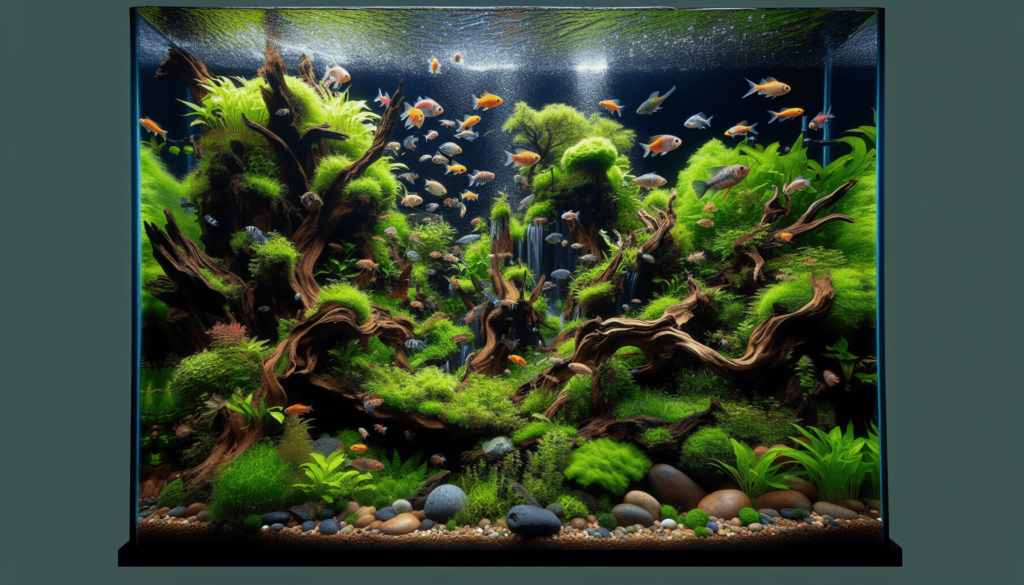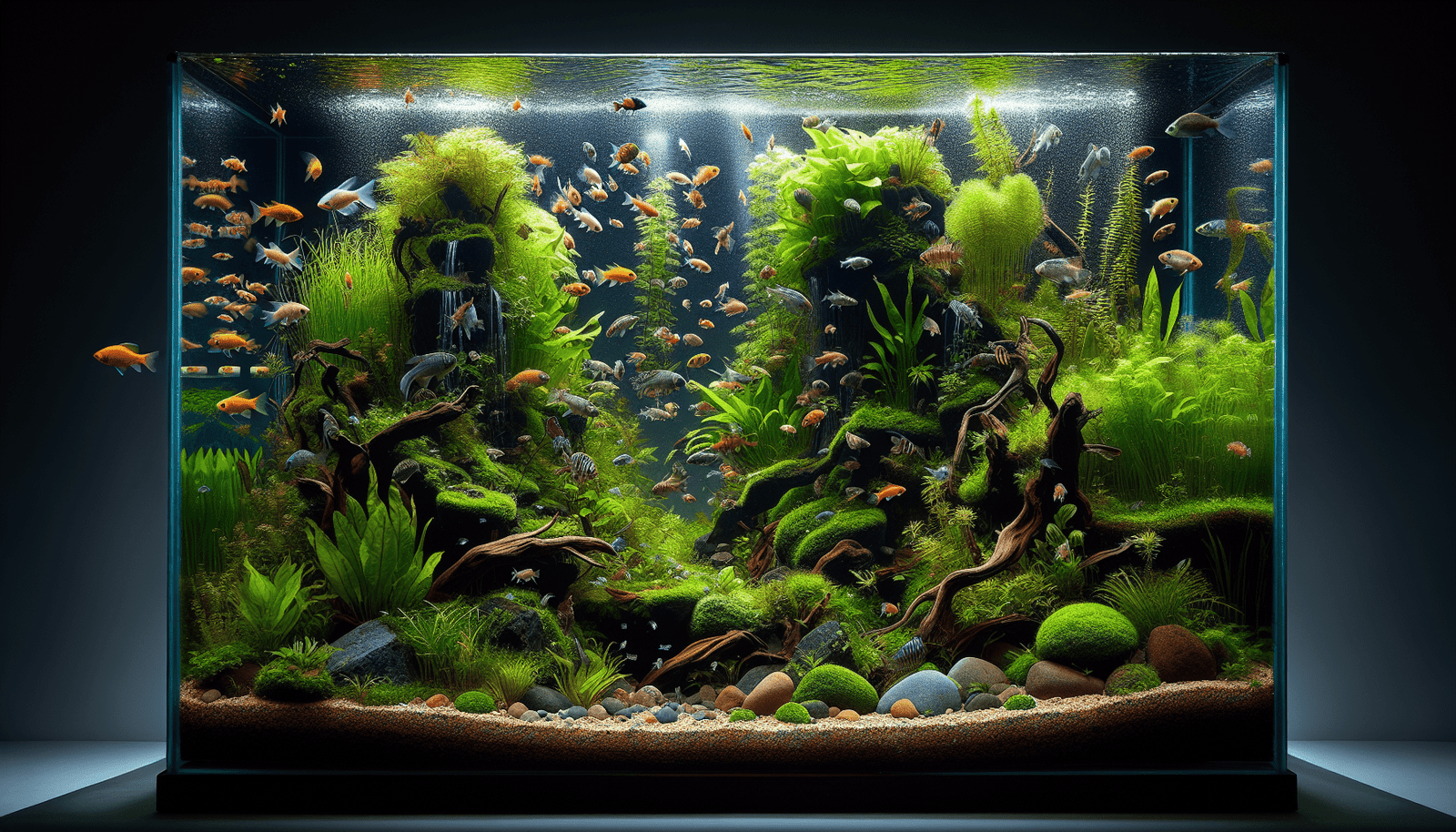In “The Art of Aquascaping: Crafting Underwater Landscapes in Aquariums,” you’ll discover the magical world of aquascaping, where people create beautiful and intricate landscapes beneath the water’s surface, just like gardens but in fish tanks. This article will take you on a journey from the early days of aquascaping to the latest trends and techniques used by today’s hobbyists. You’ll learn about the basics of designing your own underwater world, including the types of plants, rocks, and decorations you can use. With a bit of creativity and patience, you can turn an ordinary aquarium into a stunning underwater paradise that will amaze everyone who sees it. Have you ever wondered what it would be like to design your own underwater world? Imagine a place full of colorful fish, plants, and rocks, all arranged in a beautiful way. This magical art is called aquascaping. Let’s dive into what it is and how you can create your very own underwater landscape!

What is Aquascaping?
Aquascaping is the craft of arranging plants, rocks, and other items inside an aquarium to create a stunning, underwater scene. Think of it like gardening, but in water! People do it to make their aquariums look beautiful and to give fish a nice place to live.
Why is Aquascaping Important?
Aquascaping is special because it makes an aquarium more than just a tank of water. It turns it into a miniature world. An expertly arranged aquarium can look like a forest, a mountain range, or even a jungle, making it fascinating to watch.
The Main Idea
Aquascaping is all about creating an artistic underwater world. It’s like painting or sculpting, but with water, plants, and fish. It’s a fun way to express your creativity while making a happy home for aquatic creatures. Also, it’s good for the fish because it gives them a natural environment to swim around and explore.
A Little History about Aquascaping
Long ago, people began keeping fish as pets. However, the idea of decorating their tanks didn’t come until later. In the 1930s, a man named Takeshi Amano from Japan made aquascaping popular. He used beautiful plants, rocks, and driftwood to create natural scenes that looked like underwater forests or landscapes.
How It Changed Over Time
In the old days, people just put a few plants and decorations in their tanks. Today, aquascaping has become a form of art. Many people enter contests to see who can create the most stunning underwater worlds. This makes aquascaping not just a hobby but also a friendly competition!
What’s Happening in Aquascaping Today?
New Trends
Aquascaping keeps getting more popular. Now, people use special lights and tools to help plants grow better underwater. There are even new types of plants and decorations that you can use to make your aquarium unique.
High-Tech Tools
Today, you can use specialized equipment like CO2 injectors and LED lights. CO2 injectors help plants grow faster by giving them extra carbon dioxide. LED lights make the colors of the plants and fish pop, making your aquarium even more beautiful.

Important Words to Know
To make sure you understand everything, let’s learn some words used in aquascaping.
| Term | Definition |
|---|---|
| Aquascape | The design or layout you create inside your aquarium. |
| Substrate | The material you put at the bottom of your tank, like gravel or sand. |
| CO2 | Short for carbon dioxide, a gas plants need to grow. |
| Filtration | The process of cleaning the water in the aquarium. |
| Flora | The plants you put in your aquarium. |
| Fauna | The fish and other animals in your aquarium. |
Steps to Start Aquascaping
Now let’s break it down into steps so you can make your own underwater landscape!
Step 1: Choose Your Aquarium
First, pick the right size tank. For beginners, a 20-gallon tank is a good start. It’s not too big or too small, making it easier to manage.
Step 2: Gather Your Materials
You’ll need:
- Substrate (gravel or sand)
- Plants
- Rocks and driftwood
- Water conditioner to clean the tap water
- A filter
- A heater (if you have tropical fish)
- Lighting
Step 3: Plan Your Design
Think about what look you want. Do you want it to look like a jungle, a beach, or a mountain?
Step 4: Add Substrate
Put the gravel or sand at the bottom of the tank. About 2-3 inches is good. This is where your plants will root.
Step 5: Place Your Rocks and Wood
Arrange your rocks and driftwood in a way that looks natural to you. Remember, there’s no wrong way to be creative!
Step 6: Plant Your Flora
Add your plants. You can put taller plants at the back and shorter ones in the front. This creates depth and makes the tank look more interesting.
Step 7: Add Water and Equipment
Fill the tank with water and add a conditioner to make it safe for fish. Then, set up your filter, heater, and lighting.
Step 8: Cycle the Tank
Before adding fish, you need to “cycle” the tank. This means running everything for a few weeks to let good bacteria grow. This makes the water safe for your fish.

Examples of Aquascaping Styles
Nature Style
The Nature Style aims to mimic natural landscapes like mountains, rivers, or forests. Created by Takeshi Amano, this style often uses driftwood and rocks combined with carefully chosen plants to create a serene ecosystem.
Iwagumi Style
This Japanese style focuses on using rocks as the main element. It usually involves an odd number of rocks to make it look more natural, surrounded by low-lying plants.
Different Points of View
Some people like very elaborate designs with lots of plants and decorations. Others prefer a simpler look with just a few carefully placed rocks and a couple of plants. Both styles have their charm, and the best one is the one you enjoy the most!
Simple vs. Complex
- Simple Aquascapes: Easy to maintain, perfect for beginners, and often less expensive.
- Complex Aquascapes: More challenging but offer unlimited creative potential. These require more care and attention to keep everything balanced.
The Impact of Both Styles
Simple aquascapes are often easier to care for and better for beginners. Complex ones can be very fulfilling but require more work. Both styles can provide a great habitat for fish and make your space look amazing.
The Future of Aquascaping
What can we expect in the future? Let’s see!
Predictions
More people will likely take up aquascaping as a hobby. As technology improves, we might have even better tools and more plant varieties to choose from.
Implications
With more people getting interested, the industry will grow. This means more stores, more types of plants and fish, and more online communities to share ideas.
Conclusion
Recap
Aquascaping is a creative and rewarding way to design underwater landscapes. It started long ago but has turned into a popular and artistic hobby today. Whether you prefer simple or complex designs, there’s no limit to what you can create.
Final Thought
So, are you ready to create your own underwater world? Imagine how amazing it will be to see fish swimming through your beautifully crafted landscape. Start small, be patient, and most importantly, have fun!
We’d love to hear from you! What kind of aquascape would you create? Share your ideas and let’s explore this fascinating hobby together.
Credible Sources
- Amano, Takeshi. “Nature Aquarium World.” Digital Aquarium Publishing, 1997.
- “Aquascaping: A Creative Guide.” Edited by George Farmer, Practical Fishkeeping Magazine, 2020.
- “Introduction to Aquascaping.” The Spruce Pets, 2021.
Happy aquascaping!



